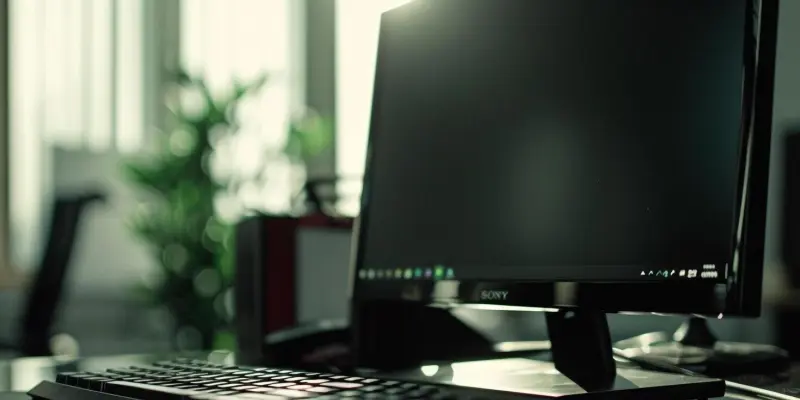As Microsoft phases out support for Windows 10, many users face the conundrum of transitioning to newer systems or exploring alternatives. The company’s focus on promoting upgrades to Windows 11 and marketing new devices like the Copilot+ PCs brings change but also challenges—a technological crossroads. Simultaneously, a grassroots effort known as the End Of 10 project is gaining attention by advocating for Linux. This community-driven initiative highlights Linux’s viability as a robust operating system poised to give life to computers otherwise left behind by Windows 11’s hardware requirements.
Linux as a Cost-Effective Alternative
Economic Considerations
Linux has emerged as a cost-effective alternative for those looking to extend the lifespan of their devices. One significant advantage is that many versions of Linux are free to download and use, eliminating hefty license fees typically associated with other operating systems. Moreover, Linux runs efficiently on older hardware without compromising performance, providing an opportunity to make the most of existing devices without investing in expensive upgrades. The community-driven nature of Linux ensures an abundance of free software updates and support, saving users money on both hardware and software fronts.
In addition to direct savings, Linux’s lightweight nature contributes to lower energy consumption. This efficient operation not only reduces electricity bills but also aligns with environmental sustainability goals. Reduced system requirements mean hardware can perform optimally without additional resources, lowering carbon emissions by allowing devices to remain functional and relevant for longer periods. This ties into this era’s increasing emphasis on sustainability, encouraging responsible technology use and limiting electronic waste.
Absence of Ads and Surveillance
Linux stands out for its commitment to user privacy and control, distinguishing itself from many commercial operating systems that are often riddled with ads and surveillance mechanisms. In contrast to some systems that pry into user activity to target personalized advertising, Linux users enjoy a cleaner, less intrusive environment. This absence of bloatware translates into faster system performance, ensuring that the hardware capabilities are directed toward user-intended tasks rather than being bogged down by superfluous processes.
The elimination of background tracking and advertising resonates well with users increasingly concerned about digital privacy. By opting for Linux, users can experience peace of mind, knowing that their data remains private and secure. The transparency in Linux’s architecture empowers users with more significant control over software and system configurations, providing an empowering shift from corporate-controlled ecosystems to a more controlled, user-centric environment.
Navigating the Transition to Linux
Addressing Perceived Challenges
Transitioning to Linux from a widely-used system like Windows presents some perceived challenges, especially for users accustomed to familiar interfaces and functionalities. The End Of 10 project addresses these concerns by offering structured support and resources tailored to assist users in this transition. Manuals, tutorials, and forums provide essential information and answers to common technical issues, making the switch as seamless as possible. The collective wisdom and experience of the Linux community offer reassurance that no question is too trivial, fostering a welcoming atmosphere for all users.
The adaptation experience involves learning about different Linux distributions, which cater to various needs. While the choice might seem overwhelming, the broad array offers the flexibility to select a version suited to specific requirements, be it a lightweight option for older machines or a feature-rich version for more advanced users. This flexibility reassures new users that they don’t have to compromise on their computing goals when opting for Linux.
Fostering a Supportive Environment
One of Linux’s standout aspects is the community support that accompanies it. The collaborative ethos inherent in open-source projects extends into comprehensive support networks available to users. Online platforms abound with forums and discussion boards designed specifically to share knowledge, troubleshoot issues, and exchange advice. By tapping into these resources, users find solutions to problems quickly, contributing to an all-encompassing knowledge base that strengthens the Linux ecosystem.
Moreover, this supportive community cultivates an environment where innovation thrives, prompting users to explore, experiment, and potentially contribute back. As a result, Linux not only serves as a functional operating system but also becomes a gateway to deeper involvement in technology’s development and customization. The emphasis on collaboration not only assists in overcoming technical hurdles but also engenders a spirit of collective growth and shared success, reinforcing Linux’s appeal as more than just an alternative—it’s a vibrant community.
A Sustainable Computing Future
As Microsoft begins to phase out its support for Windows 10, countless users find themselves in a quandary, caught between the decision to upgrade to newer systems or consider alternative options. The tech giant is heavily emphasizing upgrades to Windows 11, along with marketing new devices like the Copilot+ PCs. This push presents both opportunities and obstacles, creating a significant technological crossroads. Alongside this shift, there’s a growing movement known as the End Of 10 project. This grassroots initiative is gathering momentum by promoting Linux as a viable alternative operating system. Linux stands out for its robustness and capability to breathe new life into computers that might otherwise be rendered obsolete due to Windows 11’s demanding hardware specifications. The End Of 10 project underlines Linux’s potential to fill the gap for users whose devices may not meet Microsoft’s latest requirements, offering a compelling solution in this era of change.

